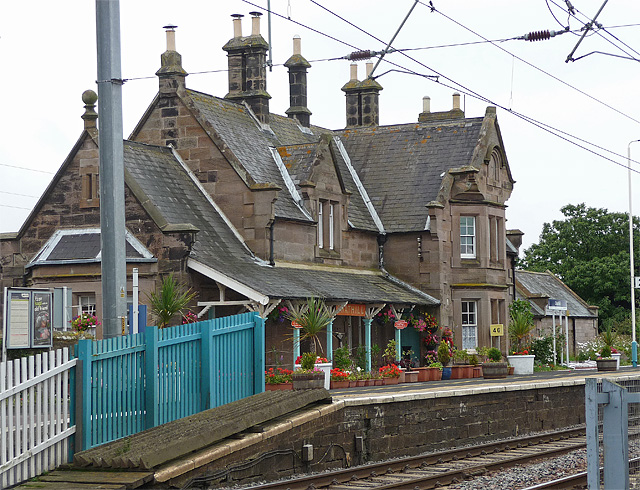Topics > Northumberland > Chathill > Chathill Station
Chathill Station
Chathill railway station is a railway station that serves the village of Chathill in Northumberland, England, and the nearby villages of Seahouses, Embleton, Bamburgh and Belford.
Although located on the East Coast Main Line, the station is served by just two arrivals and departures, Mondays to Saturdays, providing commuting links to and from Newcastle upon Tyne. The services are operated by Northern, which also manages the station. As Chathill is the northern terminus of these services and the Northern network, there are no direct connections between Chathill and stations further north (the diesel multiple unit used on these services runs empty northwards from here to Belford loop to reverse before returning to take up its southbound working).
The station was for many years served by loco-hauled stopping trains between Newcastle, & Edinburgh Waverley (the British Rail timetable for 1982 had four departures each way from here), but these were reduced in frequency & curtailed at Berwick by BR at the latter end of the 1980s and subsequently withdrawn altogether north of Chathill after the introduction of electric working on the ECML in 1991.
Because of the limited service, an easement permits passengers wishing to travel northwards towards Berwick-upon-Tweed and Scotland may double back via Alnmouth.
The station was opened by the Newcastle & Berwick Railway in 1847 and between 1898 & 1951, it was the southwestern terminus of the North Sunderland Railway. Independent until its takeover by the LNER in 1939, it formed a standard gauge rail link to the fishing village of Seahouses.
Services
The station sees only two services per day in each direction, and only on Mondays-Saturdays. .....
There is no Sunday service.
Visit the page: Chathill railway station for references and further details. You can contribute to this article on Wikipedia.

from https://historicengland.org.u…
CHATHILL STATION AND DOWN PLATFORM - List entry
- "Station c.1847 by Benjamin Green for the Newcastle and Berwick Railway. Ashlar with Welsh slate roof. Tudor style. Irregular plan. Platform facade: 1½ and 2 storeys with single-storey extensions at …
Added by
Simon Cotterill


from https://historicengland.org.u…
CHATHILL STATION AND DOWN PLATFORM - List entry
- "Station c.1847 by Benjamin Green for the Newcastle and Berwick Railway. Ashlar with Welsh slate roof. Tudor style. Irregular plan. Platform facade: 1½ and 2 storeys with single-storey extensions at …
Added by
Simon Cotterill





















